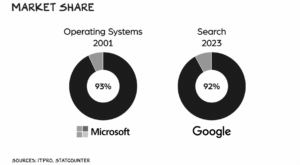Stained glass

This striking window is in a modern Catholic Church in Cong, Co. Mayo. Can’t remember who the artist was, alas. (Memo to self: always make notes when photographing interesting things.)
Quote of the Day
“A danger sign that fellow-obsessionals will at once recognize is the tendency to regard the happiest moments of your life as those that occur when someone who has an appointment to see you is prevented from coming.”
- Peter Medawar, Memoirs of a Thinking Radish
I once sat next to him at lunch when I was a graduate student and shyly asked him what advice he gave to his students. “What I tell them”, he said, “is that research is a straightforward business: you have to pick a problem that is big enough to be worth solving…” and then he paused before continuing “… and small enough to be solved!”
I’ve been dispensing this advice ever since, and miming profundity.
Musical alternative to the morning’s radio news
Robert Schumann: Konzertstück für 4 Hörner op.86 | First movement
I’m always amazed that anyone can play a brass instrument. Fortunately, they can.
Long Read of the Day
The red bourgeoisie
Absolutely fascinating memoir by Branko Milanovic about realities of life in the Soviet empire.
We were attracted to the “forbidden” things happening there. So I remember when several days later as the insurrectionist students communicated with the city only through large banners, I first saw the words “Down with the Red Bourgeoisie”. It was a new term. The students were protesting against corruption, income inequality, lack of employment opportunities. They renamed the university of Belgrade, “The Red University Karl Marx”. It was very difficult for an officially Marxist-inspired government to deal with them. The days of uncertainty ensued: the newspapers attacked them for destroying public property and “disorderly conduct”, but rebellious students continued skirmishes with the police, and proudly displayed the name of their new university. I remember vividly a bearded student with a big badge “The Red University Karl Marx” standing in the bus, and everyone around him feeling slightly uncomfortable, not sure whether to congratulate him or curse him.
But the slogan was true. It was a protest against the red bourgeoisie, the new ruling class in Eastern Europe. It was a heterogeneous class: some came, especially so in the underdeveloped countries like Serbia, from very rich families; others from the educated middle class, many from workers’ and peasants’ families. Their background was similar to the background of students who were protesting against them now.. Had the students won in 1968, they would have become the new red bourgeoisie.
The red bourgeoisie itself was the product of huge inequities of underdeveloped capitalist societies…
Great read. It reminded me of Leah Ypi’s Free: Coming of Age at the End of History about growing up in communist Albania.
My commonplace booklet
Raspberry Pi5 is here!

It’s the first Raspberry Pi to come with an in-house graphics chip. Powered by a quad-core Arm Cortex-A76 processor running at 2.4GHz, which means it’ll be two or three times faster than my Raspberry Pi4. And it’s still the size of a credit-card.
According to The Verge, it runs hot! I’m not surprised.
Linkblog
Something I noticed, while trying to drink from the Internet firehose.
** We finally know for sure what a trilobite ate Tens of thousands of fossils later, we’ve found a trilobite with a full stomach.
Not a terribly interesting diet IMO, but still. Amazing research.
This Blog is also available as an email three days a week. If you think that might suit you better, why not subscribe? One email on Mondays, Wednesdays and Fridays delivered to your inbox at 6am UK time. It’s free, and you can always unsubscribe if you conclude your inbox is full enough already!























